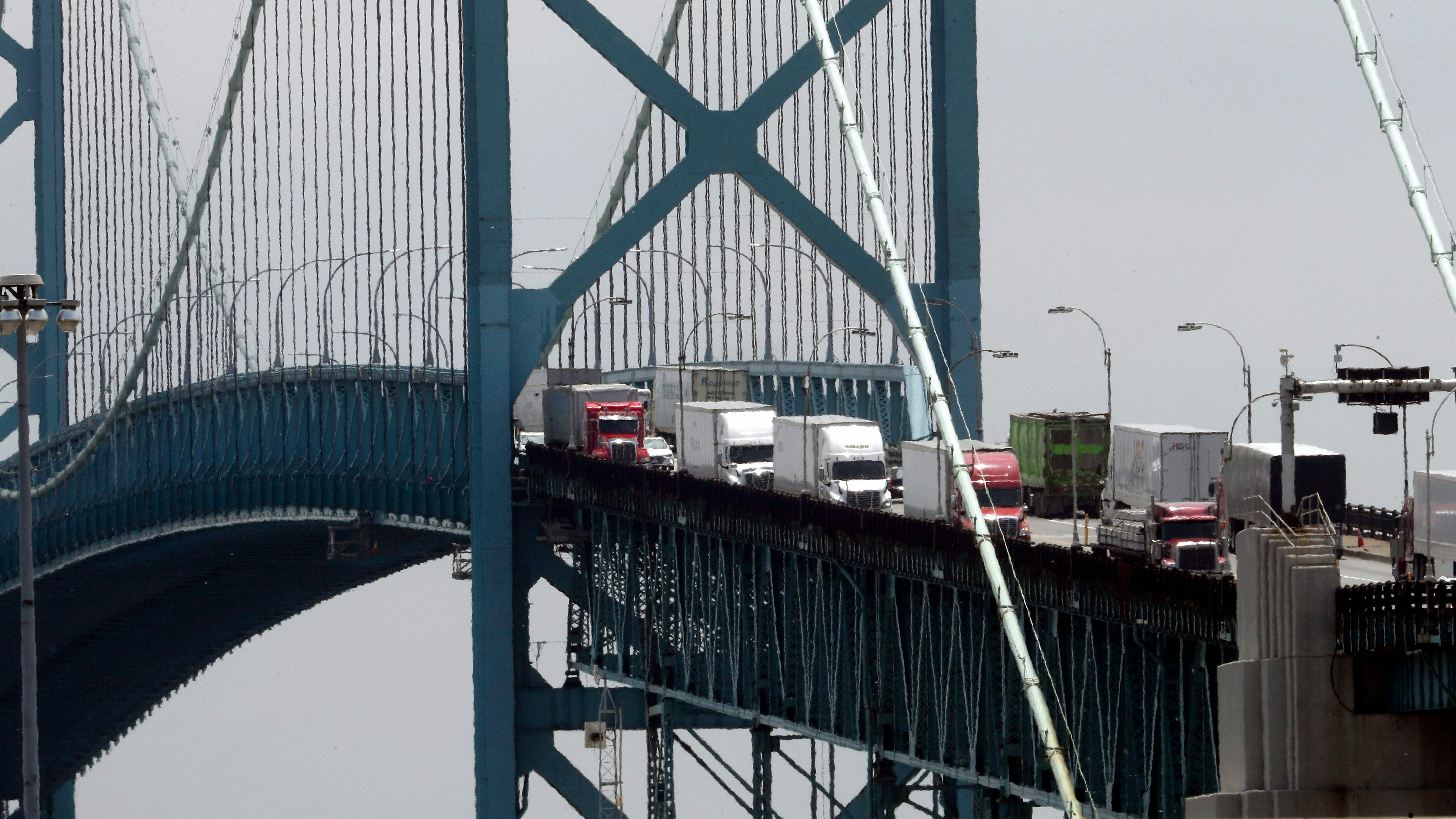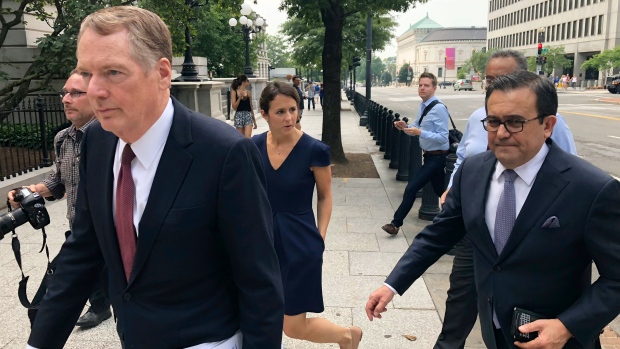Aug 27, 2018
Trump says he'll end NAFTA after reaching new deal with Mexico
, Bloomberg News

President Donald Trump said the U.S. is signing a new trade accord with Mexico to replace the North American Free Trade Agreement and called on Canada to join the deal soon or risk being left out.
Trump announced the agreement with Mexico in a hastily arranged Oval Office event Monday with Mexican President Enrique Pena Nieto joining by conference call. Pena Nieto said he is “quite hopeful” Canada would soon be incorporated in the revised agreement, while Trump said that remains to be seen but that he wanted those negotiations to begin quickly.
Canadian Foreign Minister Chrystia Freeland is leaving a trip in Europe early to travel to Washington for NAFTA talks on Tuesday, spokesman Adam Austen said on Monday.
"As we have said all along, progress between Mexico and the United States is a necessary requirement for any renewed NAFTA agreement," Austen said in a statement emailed to BNN Bloomberg.
"We will only sign a new NAFTA that is good for Canada and good for the middle class. Canada’s signature is required."
The U.S. and Mexico agreed to increase regional automotive content to 75 per cent from the current 62.5 per cent in NAFTA, with 40 per cent to 45 per cent of production by workers earning at least US$16 an hour, the U.S. Trade Representative’s office said in an emailed statement. They agreed to review the deal after six years, softening a demand by the U.S. for a clause to kill the pact after five years unless it’s renewed by all parties. Duty-free access for agricultural products will remain in place, USTR said.
As he announced the move, Trump said he would drop the name NAFTA from the accord because of its unpopularity.
“We’re going to call it the United States/Mexico Trade Agreement,” he said. NAFTA “has a bad connotation because the United States was hurt very badly by NAFTA for many years.”
Trump also stated that he will use the prospect of auto tariffs to get a bilateral deal done with Canada.
WEIGH IN

Which of these political events presents the most risk for a NAFTA deal?
“I think with Canada, frankly, the easiest thing we can do is to tariff their cars,” Trump told the assembled press in the Oval Office on Monday. “It’s a tremendous amount of money and it’s a very simple negotiation. It could end in one day and we take in a lot of money the following day.”
“But I think we’ll give them a chance to probably have a separate deal.”
CIBC Capital Markets chief economist Avery Shenfeld said that any offer the U.S. now makes to Canada will be to “take it or leave it.”
“We still think Canada and the U.S. will come to the table and get a deal done,” Shenfeld wrote in a note to clients on Monday. “But by saying Canada could be left out, the U.S. is threatening to take a tough line in those talks.”
Big Day
The president hailed the Mexico agreement as “a big day for trade.”
The peso rallied, and the Canadian dollar also advanced. U.S. stocks rose to new records, with automakers and railroads among the top gainers.
An accord between the U.S. and Mexico is the biggest development in talks that began a year ago, punctuated by Trump’s repeated threats to quit altogether. Significant breakthroughs came during the past several days of bilateral talks on automobiles and energy. The three countries trade more than US$1 trillion annually, much of it under the pact.
But questions remain about how the Trump administration will steer a deal through Congress, and whether Canada will be part of the final pact. Trump has been authorized by Congress to seek new NAFTA through his so-called fast-track authority, which allows the president to submit trade deals to lawmakers for a basic yes-or-no vote, provided the administration follows certain procedures.
Canada Hopes
The U.S. plans to submit a letter to Congress on Friday, Trump's trade representative Robert Lighthizer told reporters on Monday. The U.S. hopes Canada will join the pact this week, but it will have the option to sign on later, he said.That suggests the administration believes it has congressional authority to move ahead with its current plan as a two-way deal.

But some experts are less certain. Trump would have to go back to Congress to ratify a bilateral agreement with Mexico, said Mickey Kantor, who oversaw America’s entry into NAFTA as Bill Clinton’s first U.S. trade representative.
“They’d have to go back to the Congress," he said. “To walk away from an arrangement with the two and try to set up bilateral deals would probably cause a tremendous political response.”
Big Step
Republican Senator Orrin Hatch, chairman of the Senate Finance Committee, called the deal with Mexico an important step but added that “a final agreement should include Canada.” As the main trade committee in the Senate, the finance panel’s approval will be key to any deal.
Canada, which has been on the sidelines of the talks since July as Mexico and the U.S focused on settling differences, said an overhaul of the trilateral pact will still require its endorsement. “Canada’s signature is required,” Austen, Freeland’s spokesman, said in an email on Monday. “We will only sign a new NAFTA that is good for Canada and good for the middle class.”
Pena Nieto said in a tweet on Monday that he spoke with Trudeau and stressed the importance of Canada rejoining NAFTA talks.
Trump doesn’t plan to invoke a clause to formally withdraw from the pact, which any country can do with six months’ notice, said Lighthizer. Since his election campaign, the president has repeatedly threatened to kill the pact.
Talks to update NAFTA began a year ago, but in recent weeks have been held between just the U.S. and Mexico. The U.S. president says the 24-year-old deal has led to hundreds of thousands of lost American jobs, and he promised to either change it to be more favorable to the U.S., or withdraw.
The U.S. push to finish NAFTA talks comes at the same time it’s in a spiraling trade war with China, and has threatened to place tariffs on cars imported from major manufacturing centers in Asia and Europe -- efforts that have created new uncertainty for many businesses and investors.
- with files from BNN Bloomberg



